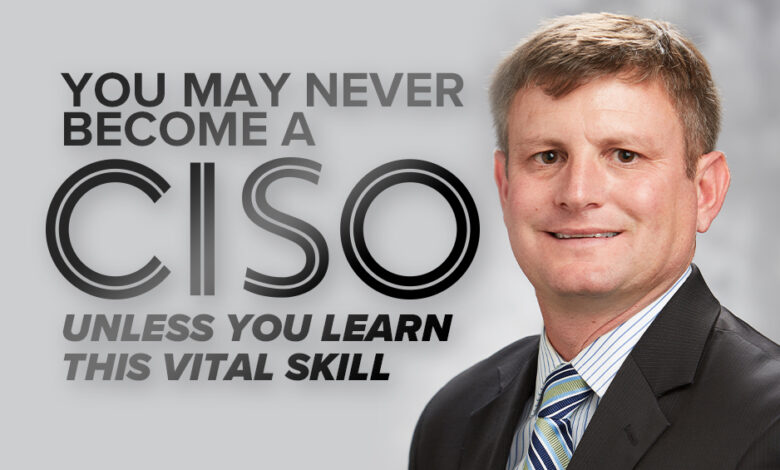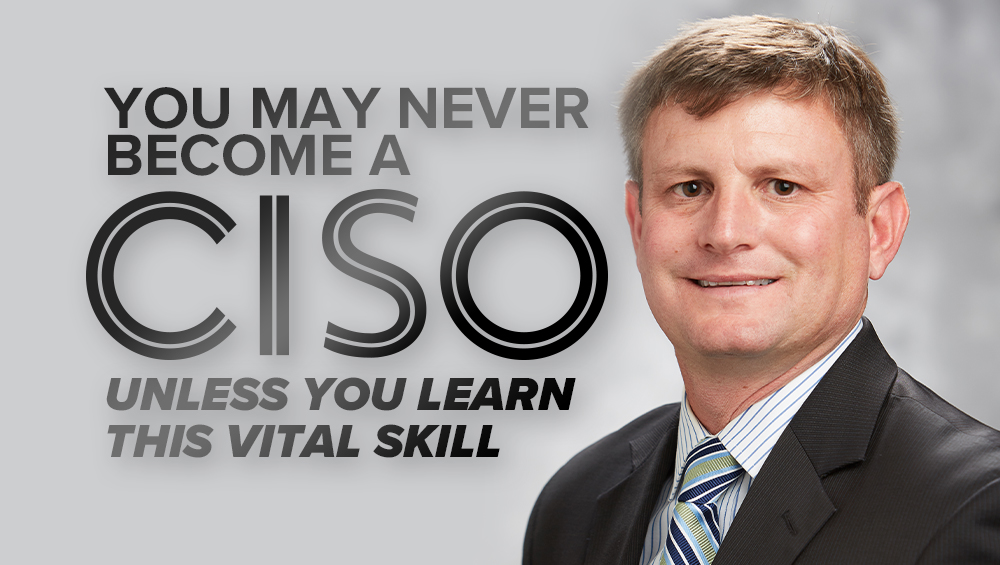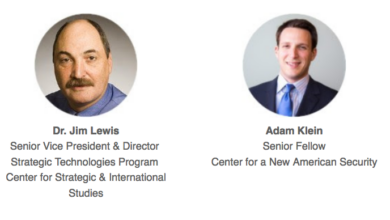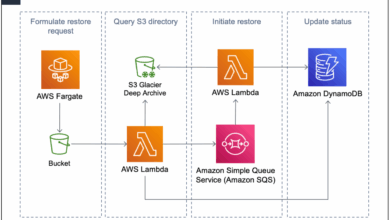
How to Become a CISO in 5 Steps
How to become a CISO in 5 steps: Ready to lead the charge in cybersecurity? This guide breaks down the path to becoming a Chief Information Security Officer, outlining the essential steps from defining the role to transitioning into the position.
This journey will explore the critical components of a CISO’s role, from the required technical skills and experience to the importance of networking and building a strong portfolio. We’ll cover the educational prerequisites, certifications, and the soft skills necessary for success. Prepare to navigate the intricacies of cybersecurity and discover how to craft a compelling resume and ace the interview process.
Defining the CISO Role
The Chief Information Security Officer (CISO) is a critical executive role responsible for ensuring the security posture of an organization’s information assets. They are the strategic leader for all aspects of cybersecurity, bridging the gap between technical security and business objectives. This involves proactive risk management, policy development, and fostering a security-conscious culture throughout the organization.The CISO role transcends the day-to-day tasks of security analysts and engineers.
Instead, they focus on the overall security strategy, its implementation, and its ongoing adaptation to the ever-evolving threat landscape. This strategic perspective is paramount in safeguarding the organization’s reputation and financial well-being.
CISO Responsibilities and Duties
CISOs have a wide range of responsibilities, encompassing both technical and managerial aspects. They are responsible for creating and implementing security policies, procedures, and standards, ensuring compliance with industry regulations (e.g., HIPAA, PCI DSS). They lead the security team, coordinating efforts across various departments, and overseeing the security budget. A key aspect is incident response planning and execution, ensuring a swift and effective response to security breaches.
Additionally, CISOs often participate in executive-level discussions, articulating the importance of security and advocating for necessary resources.
CISO vs. Other Security Roles
The CISO role differs significantly from other security-focused positions. A Security Analyst, for example, focuses on detecting and responding to security incidents, often working within a defined scope. A Security Engineer, on the other hand, concentrates on the technical implementation of security controls, such as firewalls and intrusion detection systems. The CISO, however, is responsible for the strategic direction and overall security posture of the entire organization, encompassing both technical and managerial responsibilities.
Key Skillsets for a CISO
A successful CISO requires a unique blend of technical expertise, leadership abilities, and business acumen. The table below highlights the typical skillsets:
| Skill Category | Specific Skills |
|---|---|
| Technical Expertise | Deep understanding of security technologies, threat landscape, and security architecture; proficiency in network security, cryptography, and vulnerability management; experience with cloud security platforms; knowledge of various security frameworks and standards. |
| Leadership & Management | Strategic thinking, problem-solving, communication (written and verbal), decision-making, team leadership, stakeholder management, and conflict resolution. Ability to articulate security risks and mitigation strategies to both technical and non-technical audiences. |
| Business Acumen | Understanding of business objectives, risk appetite, and financial implications of security decisions; ability to align security initiatives with business goals; knowledge of regulatory compliance requirements. |
| Communication & Collaboration | Effective communication with various stakeholders (executives, developers, legal, compliance officers); strong interpersonal skills for building trust and collaboration; ability to explain complex technical concepts to non-technical audiences. |
Education and Experience

Becoming a Chief Information Security Officer (CISO) isn’t just about technical skills; it demands a deep understanding of business strategy and leadership. A strong foundation in cybersecurity, coupled with relevant experience, is crucial. This section delves into the typical educational backgrounds, necessary experience levels, and the role of certifications in shaping a CISO’s career trajectory.
Common Educational Backgrounds of CISOs
While a formal cybersecurity degree isn’t universally required, many CISOs possess a background in computer science, information systems, or a related field. This often includes degrees in engineering, mathematics, or even business administration. A strong understanding of network security, cryptography, and system administration is highly valued. The increasing importance of cloud security and data privacy necessitates a familiarity with these areas as well.
Furthermore, a Master’s degree in cybersecurity or a related field is frequently observed in senior CISO positions, emphasizing the value of advanced knowledge and specialized skills.
Want to become a CISO in five steps? It’s a journey that involves more than just tech skills; it’s about strategic thinking and a deep understanding of security threats. Crucially, you need to be ahead of the curve, like deploying AI Code Safety Goggles Needed here , to stay on top of evolving cyber threats. Ultimately, mastering these security tools is part of the broader path to becoming a top-tier CISO.
Required Experience Levels for Aspiring CISOs
Aspiring CISOs typically need several years of experience in various cybersecurity roles. This often involves hands-on experience in areas such as network security, incident response, vulnerability management, and security architecture. Entry-level roles like security analyst, security engineer, or security auditor provide a solid foundation. A progression through progressively more complex roles, like security manager or director, is common, demonstrating increasing responsibility and leadership.
Practical experience is paramount, highlighting the importance of real-world application of security principles.
Importance of Certifications, How to become a ciso in 5 steps
Certifications like CISSP (Certified Information Systems Security Professional), CISM (Certified Information Security Manager), and CISA (Certified Information Systems Auditor) significantly enhance a CISO’s credibility and expertise. These certifications demonstrate a commitment to the field and validate the possessor’s knowledge and skills. They often serve as a benchmark for hiring managers, showcasing a candidate’s dedication to professional development and current industry standards.
Diverse Career Paths to a CISO Role
The path to becoming a CISO isn’t linear. Individuals with diverse backgrounds, such as former penetration testers, security architects, or even experienced IT managers, can transition into the CISO role. The key is a strong understanding of cybersecurity principles and a demonstrated ability to lead and manage security teams. The ability to translate technical expertise into strategic business solutions is a valuable asset.
For example, an individual with a strong background in software development may possess a strong understanding of secure coding practices, which can translate into a valuable contribution to a CISO team.
Comparison of Cybersecurity Certifications
| Certification | Focus | Relevance to CISO Role |
|---|---|---|
| CISSP | Broad cybersecurity knowledge | Excellent foundation for CISO, covers various domains |
| CISM | Information security management | Highlights management and leadership skills, valuable for CISOs |
| CISA | IT governance, control, and auditing | Demonstrates an understanding of security audits and compliance, beneficial for CISO |
This table provides a concise overview of the key certifications and their relevance to the CISO role. Each certification targets different aspects of cybersecurity, and a combination of these certifications can significantly enhance a candidate’s profile.
Want to become a CISO in 5 steps? First, build a strong cybersecurity foundation. Next, dive deep into security frameworks like NIST Cybersecurity Framework. This knowledge is key, especially when considering the recent Department of Justice Offers Safe Harbor for MA Transactions policy. Then, network with industry professionals.
Finally, actively pursue certifications like CISSP or CISM to showcase your expertise. This will help you climb the ladder to becoming a CISO.
Developing Core Skills
Becoming a CISO requires a blend of technical expertise and soft skills. Technical proficiency in security domains is essential, but equally crucial are interpersonal abilities to lead teams and communicate effectively with stakeholders. This section will delve into the specific technical skills, the importance of soft skills, and strategies for honing them.Developing a strategic mindset is paramount. CISOs must understand the interconnectedness of security threats and the broader business context.
This includes anticipating potential risks and formulating proactive security strategies rather than simply reacting to incidents.
Technical Skills
A strong foundation in technical skills is fundamental to a CISO role. This encompasses a deep understanding of networking protocols, security protocols, and cloud security principles. These skills enable CISOs to effectively design, implement, and manage security systems.
- Networking Protocols: Familiarity with TCP/IP, routing protocols (BGP, OSPF), and network topologies is crucial. This allows CISOs to analyze network traffic, identify vulnerabilities, and implement secure network configurations. Understanding how different network layers interact is essential for preventing and responding to attacks targeting the network infrastructure.
- Security Protocols: Knowledge of encryption protocols (SSL/TLS, SSH), authentication mechanisms (multi-factor authentication), and secure coding practices is vital. This knowledge empowers CISOs to design and implement secure systems that protect sensitive data and prevent unauthorized access.
- Cloud Security: Cloud computing has become ubiquitous. A CISO needs to understand cloud security best practices, including security as a service offerings. This involves expertise in cloud-specific security tools and services and understanding how to implement security controls in a cloud environment.
Soft Skills
Soft skills are often overlooked but are equally important as technical skills. Effective communication, leadership, and problem-solving abilities are critical to building trust, motivating teams, and navigating complex security challenges.
- Communication: CISOs must communicate effectively with various stakeholders, including executives, technical teams, and external partners. This involves clearly articulating security risks, strategies, and solutions in a way that resonates with different audiences. Active listening and the ability to tailor communication to the specific audience are key.
- Leadership: Leading security teams requires strong leadership qualities. This includes building trust, motivating team members, and fostering a collaborative environment. Effective delegation, providing constructive feedback, and promoting a culture of continuous learning are critical aspects of leadership.
- Problem-Solving: CISOs face diverse and complex security challenges. The ability to analyze situations, identify root causes, and develop creative solutions is crucial. This often involves using a structured problem-solving approach, leveraging data analysis, and seeking input from various perspectives.
Improving Communication and Leadership Skills
Improving communication and leadership skills involves continuous learning and practice.
- Seek Feedback: Actively solicit feedback from colleagues and superiors on communication and leadership style. Constructive criticism can identify areas for improvement.
- Develop Presentation Skills: Practice delivering presentations on security topics to hone communication skills. This will enhance the ability to articulate complex security concepts to diverse audiences.
- Engage in Mentorship: Mentoring others in the field can help develop leadership qualities and refine communication strategies.
Strategic Security Problem Solving
CISOs must approach security challenges with a strategic mindset, anticipating risks and implementing proactive solutions.
- Risk Assessment: Conduct regular risk assessments to identify potential threats and vulnerabilities. This enables proactive security measures to be implemented.
- Proactive Security Strategies: Develop and implement strategies that address vulnerabilities before they are exploited. This includes proactive monitoring, incident response planning, and regular security audits.
Essential Skills Summary
| Technical Skills | Soft Skills |
|---|---|
| Networking protocols | Communication |
| Security protocols | Leadership |
| Cloud security | Problem-solving |
| Security tools and services | Strategic thinking |
Building a Network and Portfolio

Networking is crucial for a CISO. It’s not just about collecting business cards; it’s about building relationships with peers, mentors, and potential employers. A strong network can provide invaluable insights, opportunities for collaboration, and ultimately, open doors to CISO roles. Building a robust cybersecurity portfolio demonstrates your skills and experience, showcasing your value to potential employers. This section focuses on strategies to build and leverage both.
Importance of Networking
A robust network in cybersecurity provides a multitude of benefits. Access to industry best practices, emerging threats, and potential partnerships are readily available within a strong professional network. Mentorship opportunities and guidance from experienced CISOs are also key. Networking within the cybersecurity community fosters collaboration and a shared understanding of industry challenges, allowing for the development of innovative solutions and strategies.
This translates into a better understanding of the ever-evolving threat landscape.
Professional Organizations and Events
Several professional organizations offer opportunities to network and stay abreast of the latest developments in cybersecurity. ISACA (Information Systems Audit and Control Association), SANS Institute, and (ISC)² (International Information Systems Security Certification Consortium) are prominent examples. Industry conferences and workshops, such as Black Hat, DEF CON, and RSA Conference, offer further networking opportunities, enabling professionals to connect with peers and experts in the field.
These events allow for discussions, presentations, and the exchange of ideas, critical for staying current and developing professional relationships.
Building a Cybersecurity Portfolio
A strong portfolio demonstrates a CISO’s skills and experience. It’s not just about listing responsibilities; it’s about showcasing tangible achievements and projects. Demonstrating expertise through quantifiable results is key. For example, quantifying security improvements, like a reduction in security breaches or an increase in incident response efficiency, provides compelling evidence of effectiveness. Documenting projects, outlining the problem, solution, and outcome, showcases a comprehensive understanding of cybersecurity challenges and solutions.
Showcasing Achievements and Projects
Crafting compelling narratives around past achievements and projects is crucial. Use a structured format that highlights the problem, the solution, the implementation, and the results. Quantifiable metrics, such as the number of vulnerabilities identified, the cost savings from security enhancements, or the time saved in incident response, greatly strengthen the impact of the portfolio. Presenting these achievements in a concise and impactful manner is essential for grabbing attention and highlighting value.
Using clear and concise language, highlighting key accomplishments, and avoiding jargon are key factors in presenting these achievements effectively.
Networking Opportunities for Aspiring CISOs
| Organization/Event | Description | Benefits |
|---|---|---|
| ISACA | Global professional association focused on IT governance, risk management, and cybersecurity. | Networking with peers, access to resources, and opportunities for professional development. |
| SANS Institute | Leading provider of cybersecurity training and certifications. | Hands-on training, opportunities for networking, and access to a vast community of cybersecurity professionals. |
| (ISC)² | Global professional organization dedicated to cybersecurity certifications and training. | Networking with peers, access to resources, and opportunities for professional development. |
| Black Hat | Prestigious security conference focusing on cutting-edge research and technologies. | Exposure to the latest threats and vulnerabilities, networking with experts, and gaining insights into the future of cybersecurity. |
| DEF CON | Annual cybersecurity conference known for its hands-on workshops and hacker community. | Learning about innovative security solutions, networking with passionate individuals, and engaging with a dynamic community. |
| RSA Conference | Major global security conference featuring industry leaders and presentations on security solutions. | Networking with industry leaders, exposure to the latest technologies, and gaining insights into security strategies. |
Transitioning to a CISO Role

Successfully transitioning to a CISO role requires a strategic approach beyond simply possessing the technical skills. It necessitates meticulous preparation, proactive networking, and a compelling presentation of your capabilities. This stage involves actively positioning yourself as a strong candidate, highlighting your experience and demonstrating your understanding of the CISO function. Understanding the nuances of the interview process and the types of questions you might face is crucial for a successful transition.
Preparing for a CISO Position
Preparation involves more than just gathering certifications. It demands a comprehensive review of your career trajectory, focusing on experiences relevant to the CISO role. Documenting accomplishments and quantifying their impact is critical for showcasing tangible results. Actively seek opportunities to enhance your leadership and communication skills, as these are paramount in a CISO role.
Seeking CISO Roles
Leveraging diverse avenues is key to identifying suitable CISO opportunities. Job boards like LinkedIn, Indeed, and specialized cybersecurity job sites offer valuable avenues for finding CISO roles. Actively engaging in industry networking events, conferences, and online communities can yield fruitful connections and potentially uncover hidden opportunities.
Crafting a Compelling Resume and Cover Letter
Your resume and cover letter are your initial impression. Craft a concise and impactful resume that highlights relevant experience, technical skills, and leadership achievements. Quantify your accomplishments whenever possible (e.g., “Reduced security breaches by 15%”). Tailor your cover letter to each specific job description, demonstrating a deep understanding of the organization’s needs and aligning your qualifications with their requirements.
Showcase your ability to articulate your strategic vision for cybersecurity within the context of the organization.
Navigating the CISO Interview Process
The CISO interview process is rigorous, often involving multiple rounds and diverse assessment methods. Prepare for in-depth technical questions, scenario-based assessments, and behavioral interviews. Demonstrate a clear understanding of the organization’s security posture and your ability to contribute to its improvement. Highlight your leadership experience and your capacity to collaborate with various stakeholders, from security teams to executive management.
Common CISO Interview Questions and Ideal Responses
| Question Category | Example Questions | Ideal Responses |
|---|---|---|
| Technical Skills | “Describe your experience with cloud security.” | “My experience includes migrating sensitive data to a secure cloud platform, implementing multi-factor authentication, and managing security configurations across various cloud services. I’ve also been instrumental in developing and deploying security protocols that address data privacy and compliance requirements.” |
| Leadership & Management | “Tell me about a time you had to manage a crisis.” | “During a significant security incident, I swiftly assembled a dedicated response team, implemented containment strategies, and communicated transparently with stakeholders throughout the resolution process. This incident strengthened our incident response procedures and improved our overall security posture.” |
| Problem-Solving & Critical Thinking | “How would you approach securing a new IoT device?” | “I would begin by thoroughly evaluating the device’s security posture, identifying potential vulnerabilities, and implementing robust security protocols. This would involve collaborating with the engineering team to incorporate security considerations into the design phase. Furthermore, I would develop a comprehensive security plan that includes regular penetration testing and incident response protocols.” |
| Strategic Vision | “What are your thoughts on the future of cybersecurity?” | “The future of cybersecurity necessitates a proactive and integrated approach. It requires not just focusing on technical solutions but also emphasizing employee training, developing a strong security culture, and adapting to emerging threats. I believe that predictive analytics and artificial intelligence will play a crucial role in future security operations.” |
Illustrative Examples
Successfully transitioning to a CISO role requires more than just technical expertise. It demands a deep understanding of organizational culture, strategic alignment, and the ability to inspire trust and collaboration. This section provides practical examples to illustrate the key aspects of the CISO journey.
A Successful CISO Transition Case Study
A former security engineer at a mid-sized financial institution, Sarah, meticulously built a strong security portfolio, demonstrating expertise in vulnerability management, incident response, and security architecture. She actively participated in industry events, earning recognition for her contributions to security best practices. Understanding the institution’s strategic goals and aligning her security initiatives with business objectives were critical. Sarah leveraged her experience and network to secure a CISO position at a similar institution.
Want to become a CISO in five easy steps? First, gain deep knowledge of cloud security, like understanding Azure Cosmos DB Vulnerability Details. Azure Cosmos DB Vulnerability Details highlight the importance of proactive security measures. Next, build a strong network, then focus on certifications, and finally, actively demonstrate leadership. These five steps can pave your path to becoming a successful CISO.
Her prior experience directly translated into improved security posture, reduced vulnerabilities, and cost savings.
A Hypothetical CISO’s Daily Routine
A typical day for a CISO involves a diverse range of tasks. The CISO might start by reviewing threat intelligence reports, analyzing potential risks, and prioritizing security initiatives. Meetings with senior management, security team members, and external stakeholders are essential for aligning security strategies with business objectives. A significant portion of the day may involve addressing security incidents and breaches.
This includes coordinating incident response teams, communicating with affected parties, and mitigating the impact. The CISO also needs to stay updated on the latest security threats and best practices.
Real-World Security Incidents and CISO Responses
Security incidents, from ransomware attacks to data breaches, require a swift and decisive response. A CISO’s response involves identifying the source of the incident, containing the damage, and implementing recovery plans. A critical aspect is communicating transparently with stakeholders and external parties. For instance, a phishing attack targeting employees might involve immediate communication with affected individuals, implementation of multi-factor authentication, and a review of security awareness training programs.
The CISO would ensure the affected systems are secured, data is recovered, and appropriate measures are implemented to prevent future occurrences.
Different CISO Leadership Styles
Different leadership styles can influence the success of a CISO. A collaborative leadership style fosters teamwork and knowledge sharing within the security team, while a directive style may be more appropriate in crisis situations. A visionary CISO inspires the team to adopt new technologies and procedures. Effective CISO leadership styles prioritize clear communication, accountability, and continuous improvement.
Comparison of CISO Leadership Styles
| Leadership Style | Description | Effectiveness | Strengths | Weaknesses |
|---|---|---|---|---|
| Collaborative | Encourages teamwork, knowledge sharing, and consensus building. | High | Improved team morale, buy-in, and innovation. | Potentially slower decision-making in critical situations. |
| Directive | Provides clear direction and manages tasks effectively, especially in crisis situations. | High in crisis, moderate otherwise | Quick decision-making, clear accountability, and focused action. | Potential for micromanagement, decreased team autonomy. |
| Visionary | Focuses on future-oriented strategies and inspiring the team to adopt new technologies and processes. | High | Encourages innovation, long-term planning, and growth. | Requires strong communication and buy-in from stakeholders. |
Ending Remarks: How To Become A Ciso In 5 Steps
In conclusion, becoming a CISO is a multifaceted journey requiring a blend of technical expertise, soft skills, and strategic thinking. This 5-step guide provides a roadmap for aspiring CISOs, highlighting the crucial elements needed to excel in this demanding but rewarding field. By understanding the responsibilities, acquiring the necessary skills, and strategically building your network, you can successfully transition into this leadership role.
FAQ Corner
What are the typical educational backgrounds of CISOs?
Many CISOs hold degrees in computer science, information technology, or related fields. However, a diverse range of backgrounds, including business administration or even a non-technical field, can lead to a CISO role, as long as the individual has accumulated the required experience and certifications.
What are some common interview questions for CISO roles?
Common interview questions for CISO roles often assess candidates’ understanding of security principles, their leadership style, and their problem-solving abilities. Questions may delve into past experiences, incident response plans, and the candidate’s approach to security challenges.
How important is a strong cybersecurity portfolio?
A strong portfolio is crucial for demonstrating practical skills and experience. It showcases your ability to solve security problems, manage projects, and contribute to a secure environment. Highlighting past achievements and projects in a compelling way will greatly increase your chances of securing a CISO position.
What are some examples of diverse career paths that can lead to a CISO role?
Diverse career paths can include roles like security analyst, security engineer, IT auditor, or even a network administrator. Each role provides valuable experience and knowledge that can be leveraged towards a CISO position.





